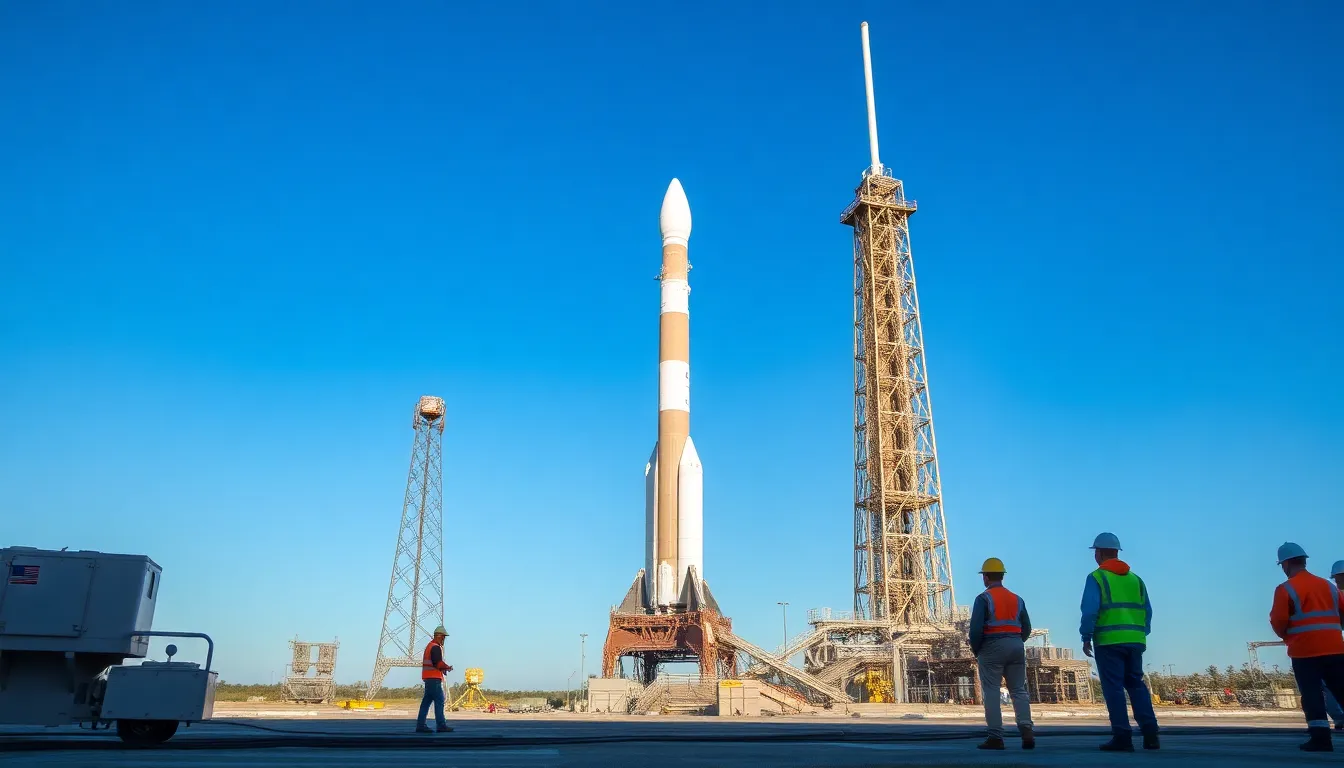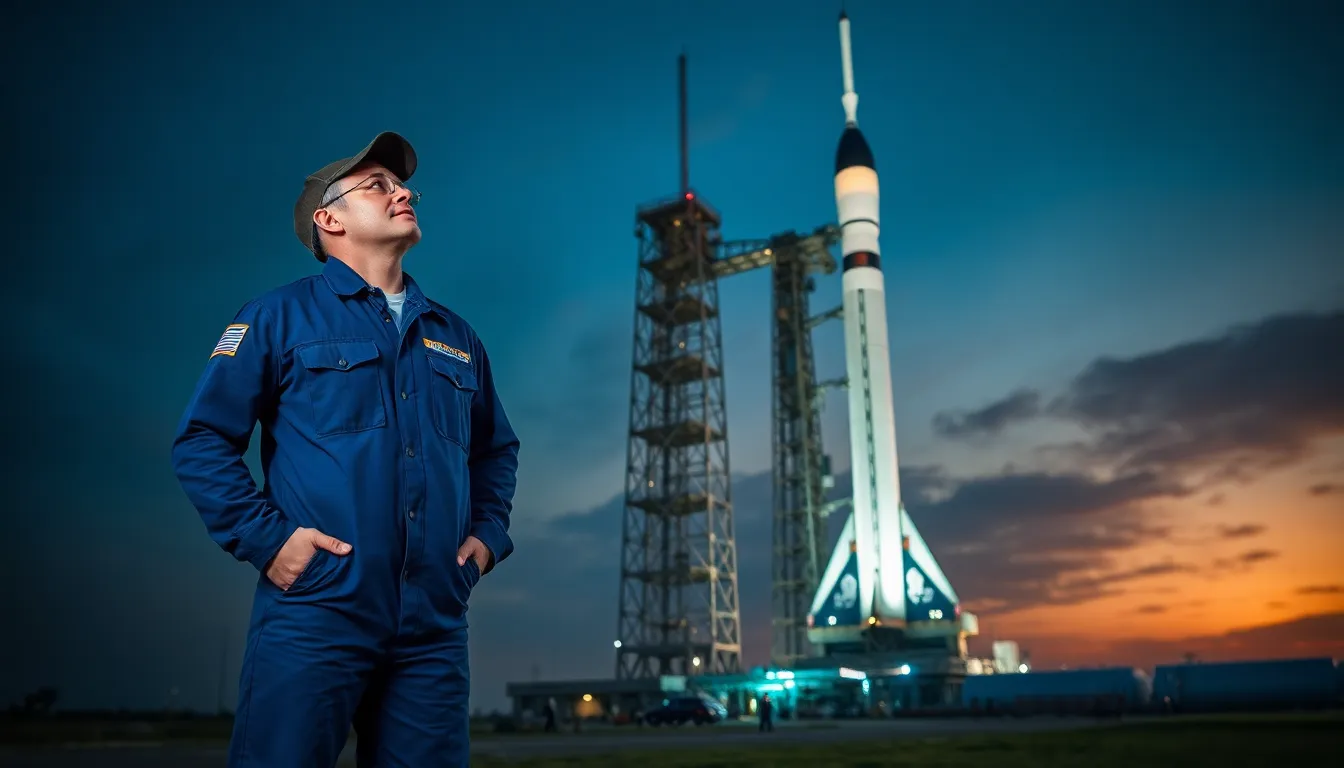Rocket launch technology isn’t just for sci-fi movies anymore; it’s the real deal that’s taking humanity to new heights—literally. With advancements that make the Jetsons look like they were driving a horse and buggy, the world of rocketry is evolving faster than you can say “liftoff.” From reusable boosters that save cash like a coupon clipper on a mission, to cutting-edge propulsion systems that could make a cheetah jealous, the future of space travel is brighter than a supernova.
Table of Contents
ToggleOverview of Rocket Launch Technology
Rocket launch technology encompasses a range of systems and processes that enable spacecraft to exit Earth’s atmosphere. Innovations such as reusable boosters play a crucial role in modern launch operations, significantly decreasing overall costs. These boosters can be recovered and refurbished for multiple flights, making space access more affordable and sustainable.
Advanced propulsion systems enhance the efficiency of rocket launches. For instance, liquid engines utilize cryogenic fuels and oxidizers, delivering higher thrust compared to solid fuels. This efficiency allows rockets to carry heavier payloads and reach desired orbits with precision.
Launch vehicles vary in design and capability. The SpaceX Falcon 9, known for its reusability, has successfully launched numerous satellites and resupplied the International Space Station. United Launch Alliance’s Atlas V offers reliability and versatility for multiple mission types, from science to national security.
Technological integrations have improved launch precision and safety. Computerized flight control systems manage trajectories in real-time, optimizing performance during ascent. Additional advancements include non-toxic propellants that minimize environmental impact.
Every rocket launch depends on extensive planning and collaboration among various sectors. Teams of engineers, mission planners, and scientists work together to ensure that every aspect of a launch is meticulously coordinated. Adverse weather conditions can affect launch windows, requiring teams to monitor forecasts continuously for optimal launch timing.
The future of rocket launch technology appears bright, driven by increased investment and interest in commercial space exploration. Various private companies and government agencies are pursuing innovative designs and approaches. These advancements promise to expand humanity’s reach in space, with missions aimed at Mars and beyond already in development.
Key Components of Rocket Launch Systems

Rocket launch systems consist of several critical components that ensure successful missions. Among these, propulsion systems and navigation and guidance systems play essential roles.
Propulsion Systems
Propulsion systems generate thrust needed to lift rockets into space. Liquid engines, like those used by SpaceX, leverage cryogenic fuels for efficient performance. Solid rocket boosters offer simplicity and reliability, typically employed during liftoff. Additionally, hybrid systems combine solid and liquid fuels, providing flexibility in design. Each propulsion option presents specific advantages for different mission profiles, such as carrying larger payloads or reaching higher altitudes. The choice of propulsion affects not only launch efficiency but also cost and environmental impact.
Navigation and Guidance
Navigation and guidance systems ensure rockets follow precise trajectories. Modern technology utilizes sophisticated algorithms to calculate optimal flight paths. Inertial navigation systems monitor a rocket’s position and speed throughout the ascent. Meanwhile, satellite-based systems enhance accuracy during flight, allowing real-time adjustments. Autopilot features enable automated control over the launch sequence, minimizing human error. These advancements in navigation increase overall mission reliability and success rates, critical for both crewed and uncrewed missions.
Advances in Rocket Launch Technology
Advancements in rocket launch technology reflect a commitment to making space access more efficient and cost-effective. Technologies like reusable rockets and small satellite launch vehicles lead this charge.
Reusable Rockets
Reusable rockets represent a major breakthrough in rocket technology. Companies such as SpaceX pioneered this concept, allowing rockets to return safely to Earth after delivering payloads. This process enables the refurbishment of the rocket for subsequent missions, dramatically reducing costs. Data shows that reusing a Falcon 9 booster can save millions compared to traditional expendable rockets. Enhanced flight reliability stems from extensive testing and proven designs, improving trust in these systems. As a result, the rate of launches has increased significantly due to affordability and efficiency.
Small Satellite Launch Vehicles
Small satellite launch vehicles cater to the growing demand for smaller payloads. As technology evolves, demand for launching smaller satellites increases. Companies like Rocket Lab and Arianespace specialize in this area, providing dedicated missions for cubesats and small scientific instruments. Lower costs and tailored launch schedules enhance access for universities and research institutions. The recent surge in small satellite launches reflects a shift toward miniaturization and increased satellite constellations. Developing these vehicles shows a commitment to advancing space exploration and the commercialization of low Earth orbit.
Challenges in Rocket Launch Technology
Rocket launch technology faces multiple challenges that affect its development and implementation. Two significant hurdles include cost management and environmental impact.
Cost Management
Cost management stands as a critical challenge in rocket launch technology. Launch expenses can exceed $10,000 per kilogram for payload delivery to low Earth orbit. Companies strive to reduce these costs through innovations in reusability and efficiency. For instance, SpaceX has successfully demonstrated reusable boosters, resulting in dramatic cost reductions and increased launch frequency. Various organizations explore partnerships with commercial entities to share financial burdens and enhance revenue streams. Innovations in manufacturing, including 3D printing, also contribute to lowering production costs, paving the way for more competitive pricing in the industry.
Environmental Impact
Environmental impact presents another notable challenge in rocket launch technology. Rocket launches emit atmospheric pollutants, including greenhouse gases and particulate matter. For example, solid rocket propellants release chlorine gas, contributing to ozone depletion. Companies are now focusing on developing cleaner propulsion alternatives, such as liquid oxygen and hydrogen combinations, which produce minimal exhaust. Regulatory agencies increasingly examine the environmental effects of launches, prompting the need for sustainable practices in the industry. Continuous advances in technology aim to minimize these impacts, ensuring responsible exploration while meeting the demands of growing commercial space activities.
Future Trends in Rocket Launch Technology
Rocket launch technology continues to evolve rapidly, driven by innovations and increased market interest. Future advancements promise to reshape the landscape of space travel significantly.
Innovations on the Horizon
In the coming years, hypersonic air-breathing engines may revolutionize launch capabilities. These engines, leveraging air intake for combustion, could enhance efficiency and reduce fuel requirements. Meanwhile, additive manufacturing techniques will streamline the production of rocket components, making them lighter and reducing costs significantly. Furthermore, the integration of artificial intelligence in flight operations will enhance navigation and optimize trajectories in real-time. Companies are also exploring new propellants, focusing on environmentally friendly options that minimize atmospheric impact. Each of these innovations strengthens the potential for more frequent and cost-effective space missions.
Potential Market Growth
Projected growth in the commercial space sector is substantial, with estimates exceeding $1 trillion by 2040. Increased satellite deployment and tourism initiatives fuel this expansion. The demand for small satellite launches is particularly notable, as micro-launchers cater to diverse applications from telecommunications to earth observation. Established firms and new entrants are investing in infrastructure to meet emerging needs, while partnerships with governmental agencies foster innovation. The rise of space exploration missions, including those targeting Mars, further drives investment in launch technologies. Through these developments, a vibrant marketplace for rocket launch services is anticipated, shaping the future of space access.
Rocket launch technology is on the brink of a new era marked by innovation and collaboration. The shift toward reusable rockets and advanced propulsion systems is making space more accessible than ever. As companies and agencies invest in cleaner and more efficient technologies, the environmental impact of launches is being addressed head-on.
The future looks bright for space exploration with the rise of small satellite launch vehicles and ambitious missions targeting destinations like Mars. With projected growth in the commercial space sector, the landscape is evolving rapidly. The continued advancements in navigation, propulsion, and sustainability will not only enhance mission success but also ensure that humanity’s journey into space is responsible and sustainable.







